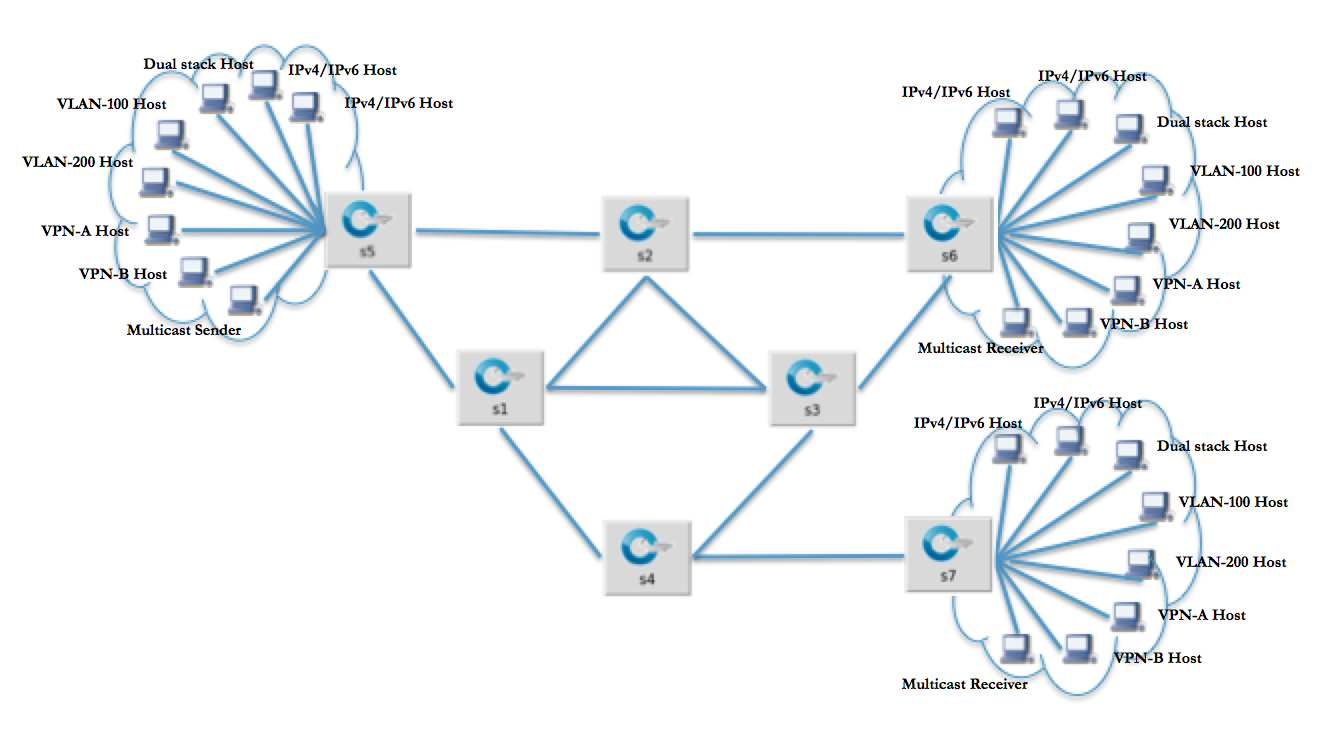Test Plan - Functional
Last Update:
by:
Test Suite Description:
The main goal of the functionality test is to verify if the ONOS package is working correctly. Functionality test focuses on testing the intent framework which allows us to build different scenarios in the network topology that ONOS should be able to handle. A test run covers from network discovery to rerouting flows by changing the network topology during the test. We verify the results by analyzing ONOS state before and after each scenarios as well as confirming hosts reachability.
Test Topology:
Intent Functionality Test Suite
Purpose
This test ensures the functionality of intent framework application. The script focuses on the northbound with high level verification included in the CLI application.
Test Overview
This test uses a topology shown in the figure below emulated via Mininet. The topology has 7 switches, each end switch consist of multiple hosts that has different configuration. The remaining core switches are used to test rerouting by bringing links up and down. The test combines single and multi node testing using OF 1.0 and 1.3 OVS. Test configuration will vary in the values inside params file.
Test Strategy
The test heavily depends on connectivity of the devices under test. High level verification such as verifying states are done multiple times before and after events. Connectivity and state verification determines the passing criteria of each test case.
Test assumption
A test bench that has onos package deployed
Requires at least a single node cluster
Mininet topology included in the test dependency folder should run without errors
Stable ONOS build ( v1.3 and up )
VLAN module installed
NOTE: Please read READme file in the test folder for more information about dependencies
| Test Suite | Test Cases | Passing Criteria | Road Map |
|---|---|---|---|
| Intent Functionality (FUNCintent) | Host intent |
| Now |
| Point intent | Now | ||
| Multi-to-single point intent | Now | ||
| Single-to-multi point intent | Now |
Test Principle
Test will only use all the functionality related to intents and other sub system in the CLI application
There will be repetitive verification before and after an event
Use of dependency python files to extend the test script functions for code reusability
The test can be extended for more low-level verification
Testing disregards performance of any application or subsystem used and focused entirely on the functionality of the system
- Passing criteria of each cases should always include device connectivity
